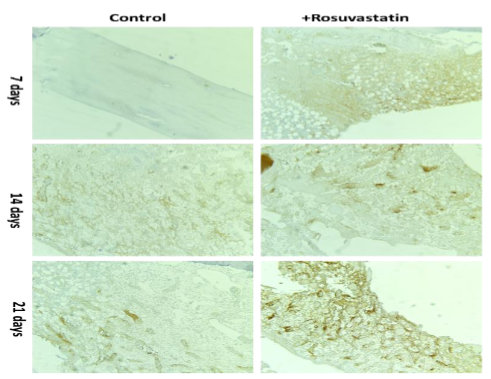Rosuvastatin-Induced CD34 Bone Healing Marker
Abstract
Rosuvastatin is primarily used for controlling abnormal lipids and cholesterol in the blood; however, evidence proves that when rosuvastatin was administered to patients with fractured bones, the administration demonstrated dramatic improvement in the wound healing process and regeneration characteristics of the bones. Physiologically, in the cases of the fractured bone, the bone marrow releases CD34+ cells into the peripheral blood, which circulates to the site of the fracture and recruits them there. The following study it is aimed to examine the effect of rosuvastatin on the promotion of expression of CD34. The study further aims to evaluate the impact of rosuvastatin on the repair and healing of fractures through a randomized control trial. 20 Rabbits were divided into two equal groups, which had ten rabbits each. Group one was the controlled group which received the placebo, which was normal saline, while the second group was the experimental group which was labelled as the rosuvastatin group. The results of the following study suggested that there was significant evidence of early osteogenesis in the group which received rosuvastatin as compared to the controlled group. In addition to it, the study confirmed that rosuvastatin is responsible for the early healing of the fracture and effective bone regeneration and repair.







